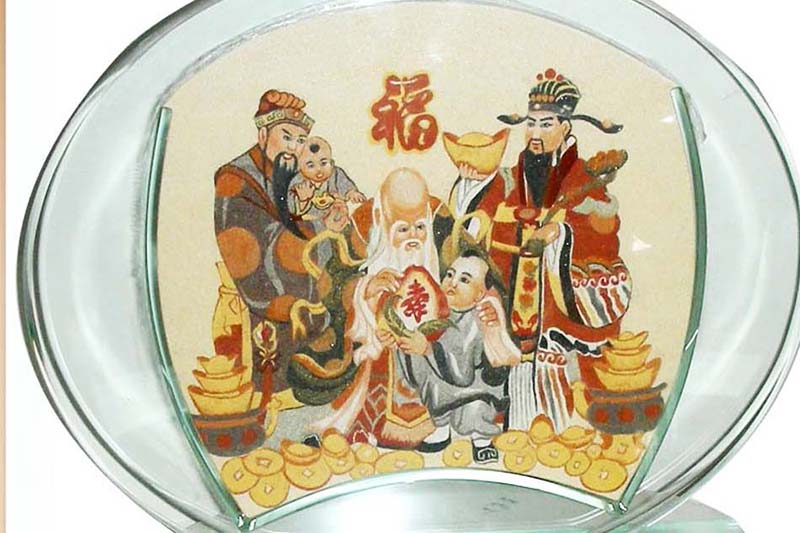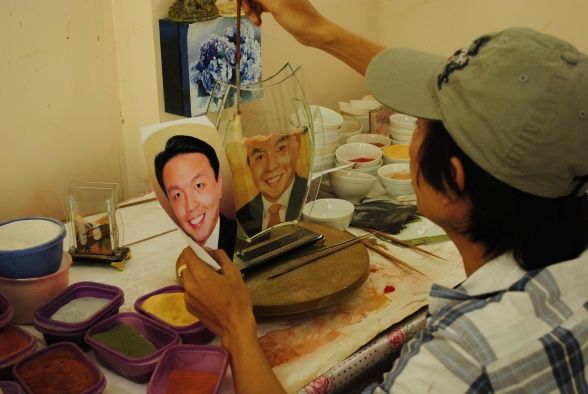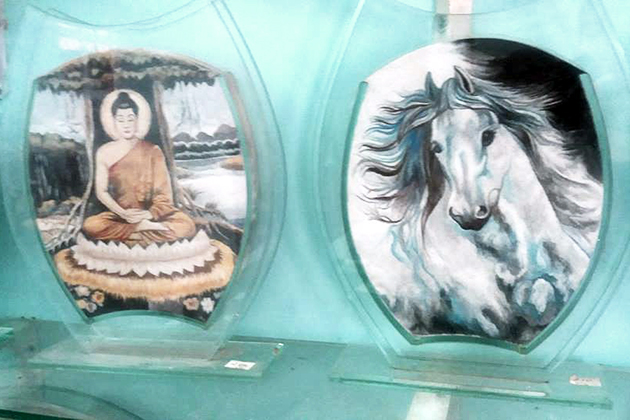In Vietnam, it has been about more than a decade since sand painting – a new type of art appeared but it showed a relentless advance through special works of sand painting made by Vietnamese artists. This kind of painting consider as the new wind of Vietnamese artworks.
What is Sand Painting?
Sand painting is known as the art of pouring colored sands and powdered pigments from crystals or mineral or pigments from other natural or synthetic sources onto a base of smooth sand to form a sand painting. There are two basic types of Vietnamese sand painting: fixed sand painting (traditional) and unfixed sand painting (modern).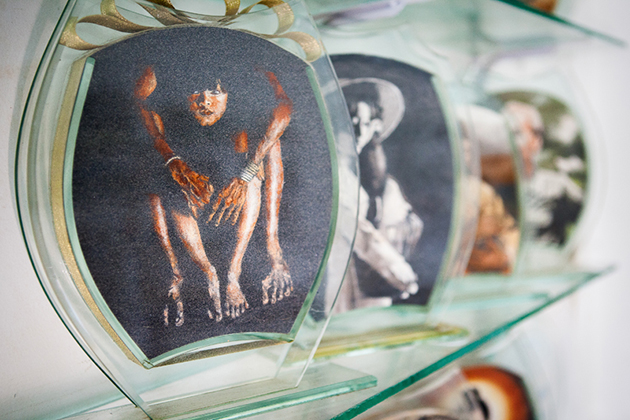
The Origin of Sand Painting in Vietnam
In 2009 Ukraine’s Got Talent, Kseniya Simonova touched hearts of millions of viewers around the world with a clip of sand painting depicting the life of people in her country during World War II. Since then, sand painting has become popular and enthusiastically supported. In Vietnam, Tri Duc is considered the first artist to perform sand painting in the music show “Charming Vietnam Gala” and got a lot of publicity. Along with Tri Duc, other artists such as The Nhan, Phan Vu…are also well-known in the field of unfixed sand painting in Vietnam. Some famous works to be mentioned are Mother’s Diary, The Baby, A Father’s Love. These sand painting clips have received very high views and praises from the online community.
Classification of Sand Paintings in Vietnam
Sand painting is divided into two basic types: fixed sand painting and unfixed sand painting.
Fixed Sand Painting
Fixed sand painting is a type of sand art painting in which the artisan meticulously scatter sand into containers such as bottle, cup, glass, decanter, glass bottle..to create a complete work according to the theme set before.
The art of sand painting in Vietnam is considered easy to develop because we can get sand from various sources such as river, stream or sea. Currently, the number of sand types used for painting in our country can make up to about 81 colors. To complete a fixed sand painting may take more or less time depending on the craftsman’s skill or the content, detail of the work. In Vietnam, Y Lan, Phuong Vy, Quynh Vy are known as talented and pioneers in the development of fixed sand painting.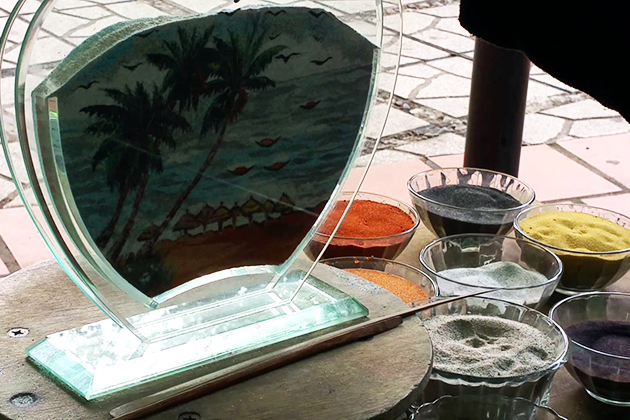
Unfixed Sand Painting
Unlike fixed sand painting, unfixed sand painting is the art in which the artist will perform in the stage. Also with raw material is sand, unfixed sand painting artists have combined with modern film-making tools such as widescreen, music and lighting to be set on stage. The tool to perform is very simple: just a lightbox (usually with glasses attached to the light) and the talent of the artist. With music, light, rhythm and drawing movement, the sandy frame change constantly to tell a complete visual story with the audience. It brings up a lot of feeling and emotion. Each performance lasts from 7 to 10 minutes with the script and theme arranged. In Vietnam, there have been some artists who make an impact in recent years such as Dang Tri Duc, Phan Anh Vu,…
Eternal Development of Vietnam Sand Paintings
Recently, it is not difficult to see the art of sand painting in Vietnam has the eternal development in both genres. In the field of unfixed sand painting, Tri Duc is one of the most influential artists. He had many sand art shows that meet the public’s expectation. For example, Tri Duc was invited to perform in the play “The Ghost Soldier” of the playwright Nguyen Quang Vinh. He both painted and looked like a quietly old casuarina, as a witness for the happenings of the play. Moreover, Tri Duc also illustrated unfixed sand paintings for the documentary film “The No Number Train” with more than 100 delicate sand paintings.
On the other hand, Y Lan is known as the most famous fixed sand painting artist in Vietnam. She has started with this art since 2001 and is considered the pioneer of fixed sand painting in Vietnam. Up to now, Y Lan has made thousand of sand painting works with different types such as landscape, portrait, architecture, calligraphy…In particular, in 2005, Y Lan donated her works to heads of state at the APEC summit hosted by Vietnam. At that time, each of the leaders was given a picture of their portrait, which made them very surprised and delighted. For her contribution to the art of sand painting, in 2012, Y Lan has been recognized as the one who finds the most sand color in Vietnam by Vietnam Guinness Book of Records.

